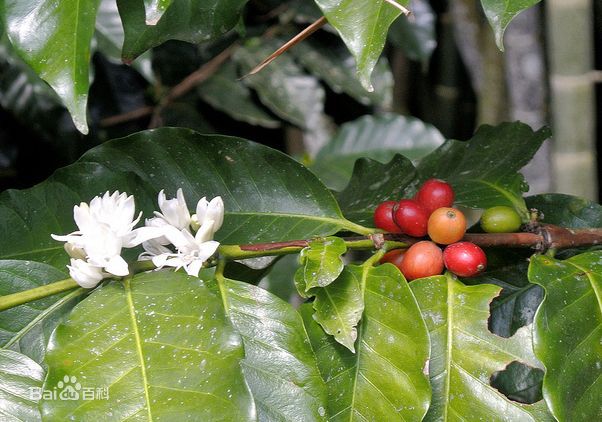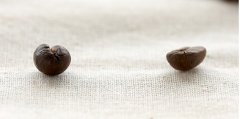How many treatments are there for Brazilian coffee? Brazilian coffee flavor
The four most common treatments for Brazilian coffee are sun, desizing, half-washing and washing, with sun being the most popular. Since the harvest seasons of Cerrado Mineiro and Mogiana Paulista, Brazil's two main producing areas, are both dry seasons of the year, natural solarization is very popular in this area.
Natural solarization differs greatly from the washing method used in other Central American countries and Colombia. Since the term "unwashed" does not fully summarize the essence of this process, the Brazilians finally chose the same term "Natural" as Ethiopian coffee. Be aware, however, that Brazilian sunning differs from traditional Ethiopian sunning. Brazilians refer to the process of picking coffee and non-traditional processing, because brazilians allow coffee to absorb sunlight on branches and ripen completely before picking it.
In Brazil, freshly picked fruit is dried on the terrace, and the dried fruit is known locally as "Boia"(English for "ball"). As I said before, all coffee is picked unpicked, so a lot of the fruit is overripe during the drying process, and it dries like a raisin. In more modern plantations, workers sift the coffee before drying it, stripping out the immature fruit by putting all the fruit into a vat, where the immature fruit floats above the water because of its lighter weight, and siphoning it away. But on relatively backward plantations, workers don't have enough cash for the equipment, and the unripe fruit can't be fully peeled, which is why many Brazilian sun-baked coffees are mixed with unripe beans.
Traditionally, sun-cured coffee has leather, tobacco, and wood flavors, but Brazilian natural sun-cured coffee has sweet flavors and balanced fruit aromas. Dr. Flavio Borem, from the Federal University of Lavras (UFLA), has conducted extensive research on natural sun treatment of green coffee beans. According to his theory, in order to ensure the high quality of coffee, one must strictly control the metabolic rate of coffee beans during drying to maximize the sweetness, complexity of taste and body of coffee. Only by strictly controlling the outside temperature and drying speed during the drying process can one ensure the integrity of coffee cell structure. During drying, the cell wall of coffee cells is easily damaged. Once the cellular structure is destroyed, the quality of coffee will not be guaranteed.
Let's talk about the desizing process. The desizing process was introduced to Brazil 25 years ago by Pinhalense, a well-known machinery manufacturer. Desizing is Brazil's second most popular method of processing green coffee beans, known to Brazilians as "Cereja Descascado"("Descascado" means "peel removal" and "Cereja" means "fruit"). In Central American countries, desizing is also known as "honey processing." A desizer is essential for processing green beans in this way. Coffee processed in this way is extremely sweet and has a unique flavor. The desizing machine separates the peel and pulp parts of the coffee fruit from the green beans. After the desizing step, the mucous membrane on the surface of the green beans is rinsed with water to the desired extent and dried. The unique feature of this method is that the raw beans are not fermented. The beans must be dried quickly to prevent spoilage and mildew, since there is still a small amount of mucilage attached to the surface. Once dried, green beans are placed in wooden boxes called Tulhas for a period of time to make the taste and aroma of coffee more consistent.
Semi-washing is now an outdated method of processing green beans in Brazil, which is easily confused with desizing, but it seems to me that semi-washing is somewhat unique. Semi-washed coffee tastes extremely mellow, high sweetness, this treatment method for the grower's operating skills and experience requirements are extremely high, once wrong, coffee will become difficult to swallow. As with the desizing method, the fruit is first desized by a desizer, but the difference is that the semi-washing method requires as much removal of the peel and pulp as possible, as well as the mucous membrane on the surface of the green bean. In Central America, the fruit is desized and washed directly in a washing machine, so this method is also known as "mechanical washing." The green beans are so clean that they can be dried without fermentation. Semi-washed coffee dries quickly at constant temperatures, so the coffee tastes purer, less musty and fruity than other slower drying coffees. Finally, let us talk about washing method, although recently many Brazilian coffee growers expressed strong interest in washing method, but the domestic and foreign markets for this coffee demand is still not high, the reason is washed Brazilian coffee in the international market reputation is not good, and washing technology in Brazil started late, is not yet mature. Washed coffee is treated similarly to semi-washed coffee, except that washed coffee requires fermentation to remove mucus from the green bean surface. Washed coffee usually tastes pure and has a pleasant acidity.
These are the four most common green bean treatments in Brazil. Once the green beans are processed, leaving only parchment on the outside, the coffee is finally screened to meet the quality of fine coffee. Parchment coffee beans are sent to a central drying plant where they are finally sorted, bagged and ready for export. Factory workers first grade the coffee according to the density of the green beans using a vibration sifting method. You know, density is one of the most important criteria for coffee quality. After grading, the beans are cleaned again, and the cleaned beans are sent to a laboratory for final color grading. The colorimeter uses a laser to detect imperfections or stains on the coffee bean surface. Generally speaking, in Brazil, the level of mechanization of raw bean sorting is extremely high. Machining not only avoids unnecessary mistakes, but also helps solve labor problems caused by high wages.

Important Notice :
前街咖啡 FrontStreet Coffee has moved to new addredd:
FrontStreet Coffee Address: 315,Donghua East Road,GuangZhou
Tel:020 38364473
- Prev

How to use V60 Coffee filter Cup
The characteristics of the V60 hand filter bowl through the V60 hand filter bowl, you can control many variables in the coffee making process at will, and its controllability is much higher than that of any drip filter coffee machine or coffee pot on the market. The high performance of V60 comes from three major features of its own design: 1. The tilt angle of the four walls of the filter bowl is 60, which makes it easier for the water to flow to the center of the filter bowl, increasing the coffee powder and water.
- Next

Five major coffee problems what to do about coffee addiction
1. The temptation of caffeine our desire for coffee is weaker than sexual desire and stronger than alcohol. The average coffee lover is unlikely to experience the instant impact of coffee on the brain. Coffee can only make their minds clearer, that's all. In fact, if you don't drink coffee one day, you will find that all foods containing caffeine are delicious and attractive. Drink coffee while talking
Related
- Beginners will see the "Coffee pull flower" guide!
- What is the difference between ice blog purified milk and ordinary milk coffee?
- Why is the Philippines the largest producer of crops in Liberia?
- For coffee extraction, should the fine powder be retained?
- How does extracted espresso fill pressed powder? How much strength does it take to press the powder?
- How to make jasmine cold extract coffee? Is the jasmine + latte good?
- Will this little toy really make the coffee taste better? How does Lily Drip affect coffee extraction?
- Will the action of slapping the filter cup also affect coffee extraction?
- What's the difference between powder-to-water ratio and powder-to-liquid ratio?
- What is the Ethiopian local species? What does it have to do with Heirloom native species?

